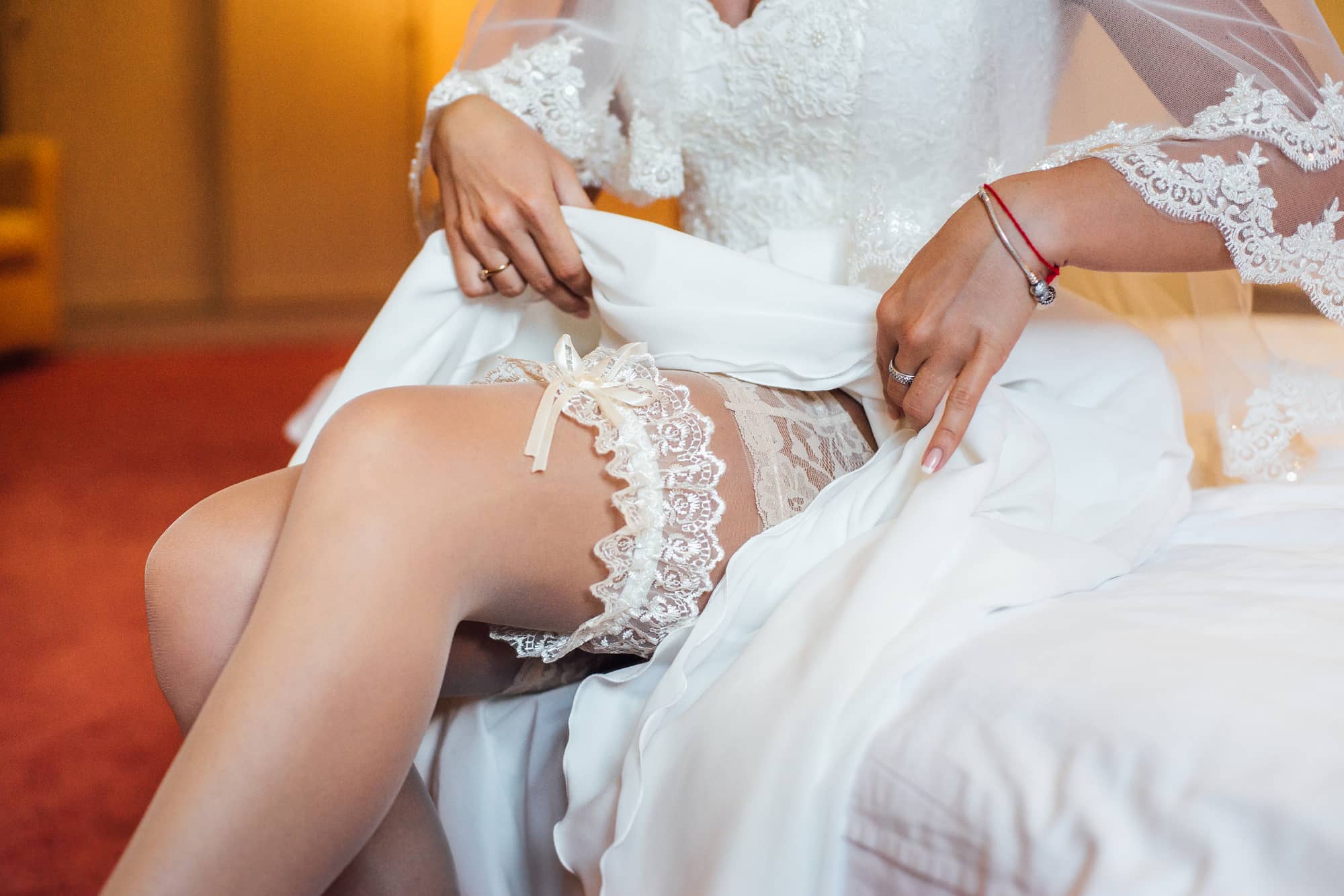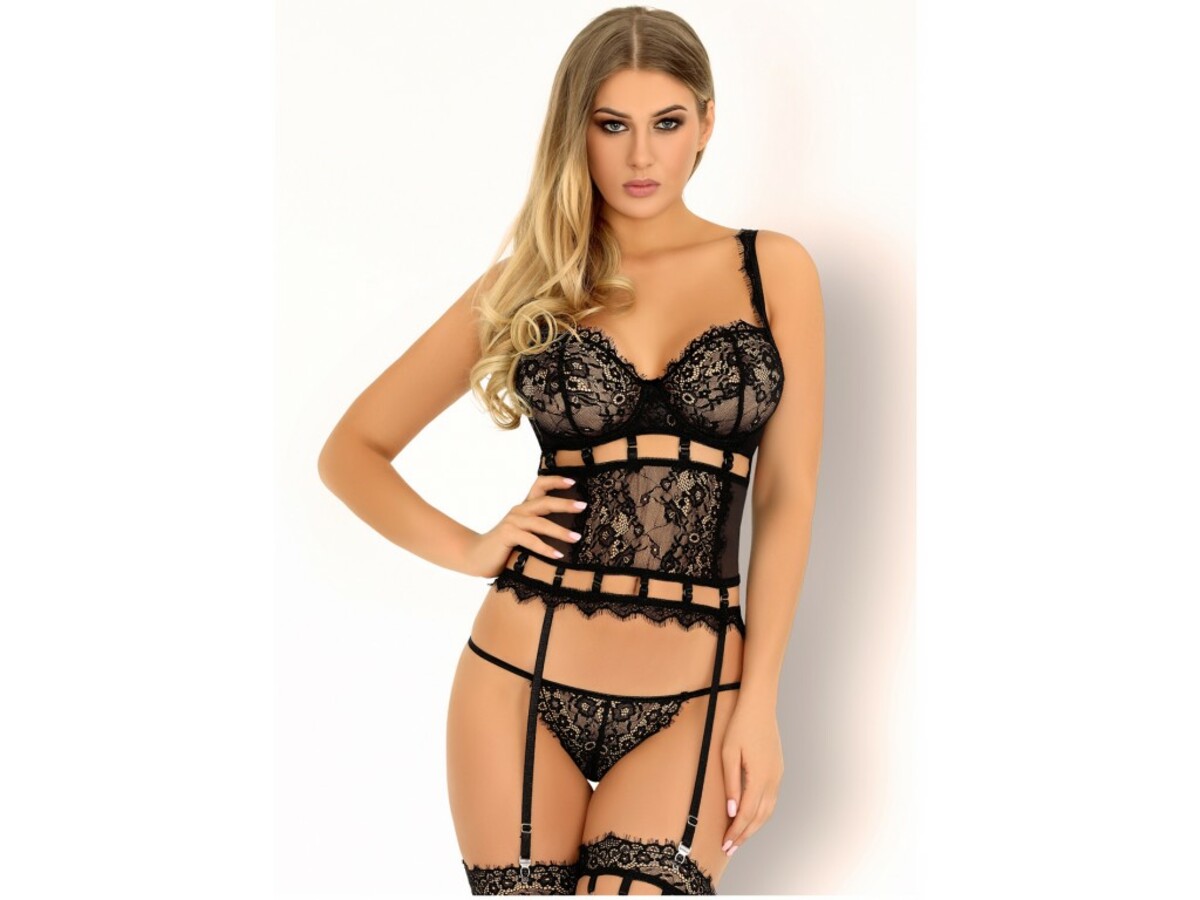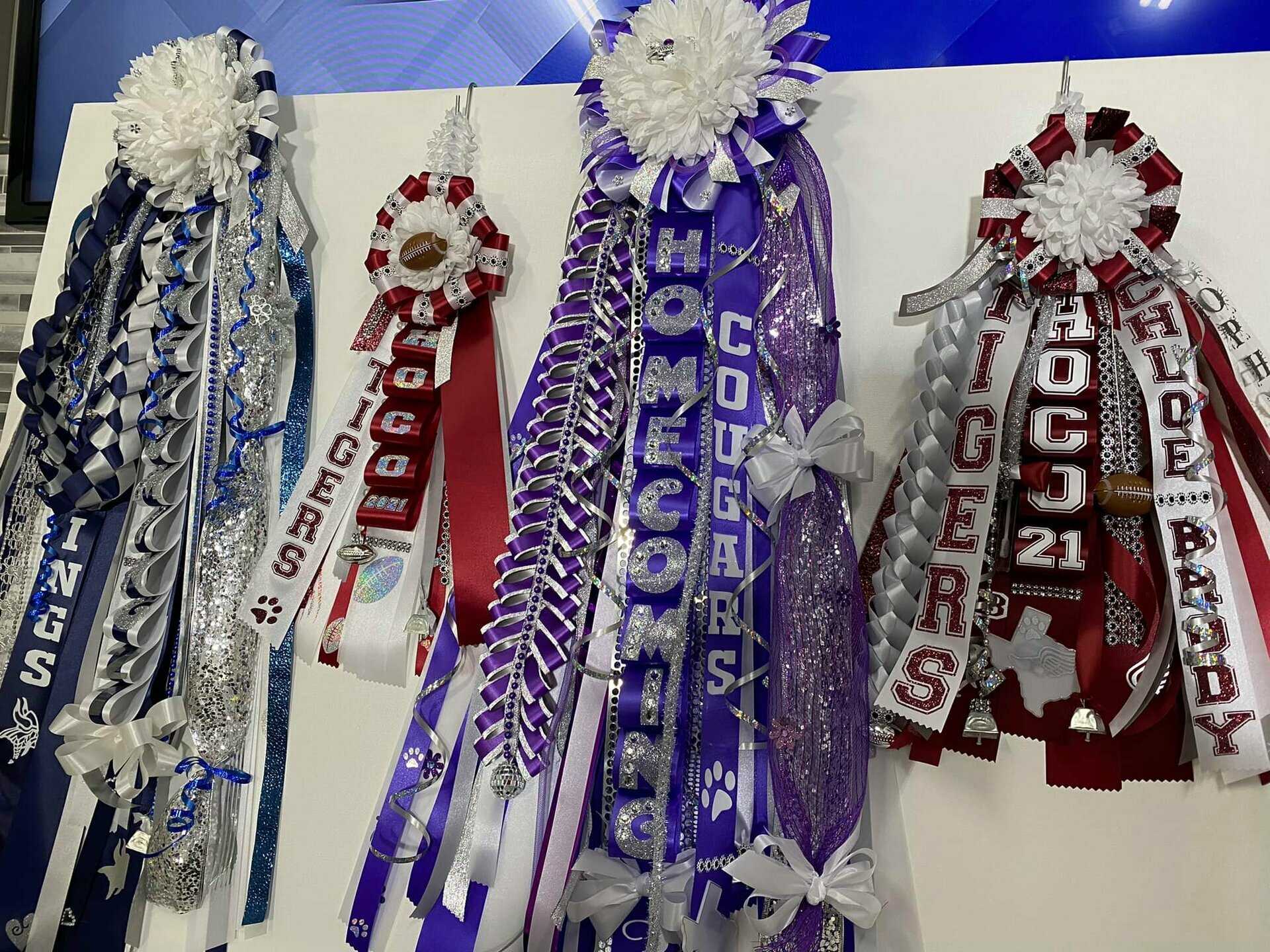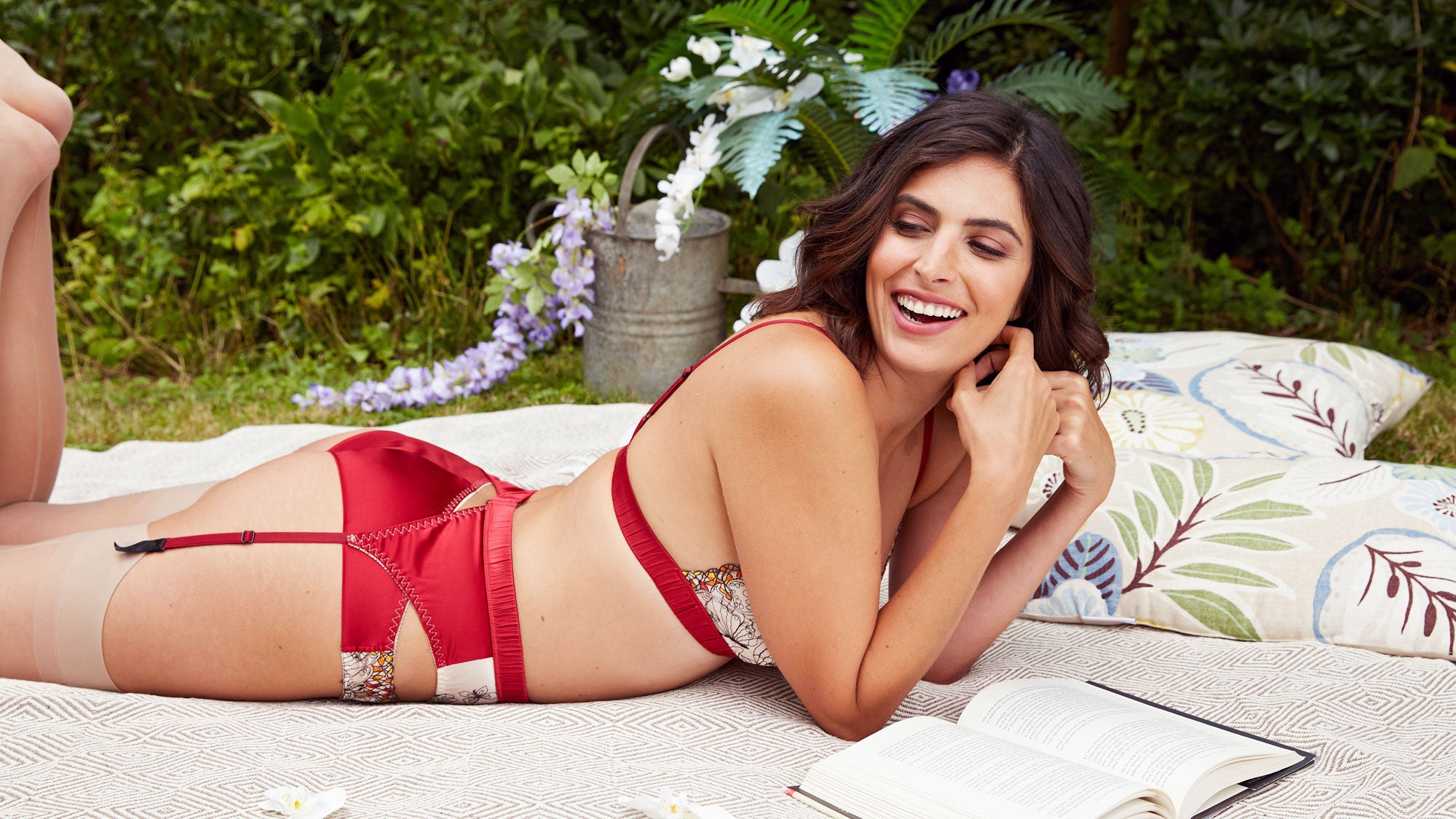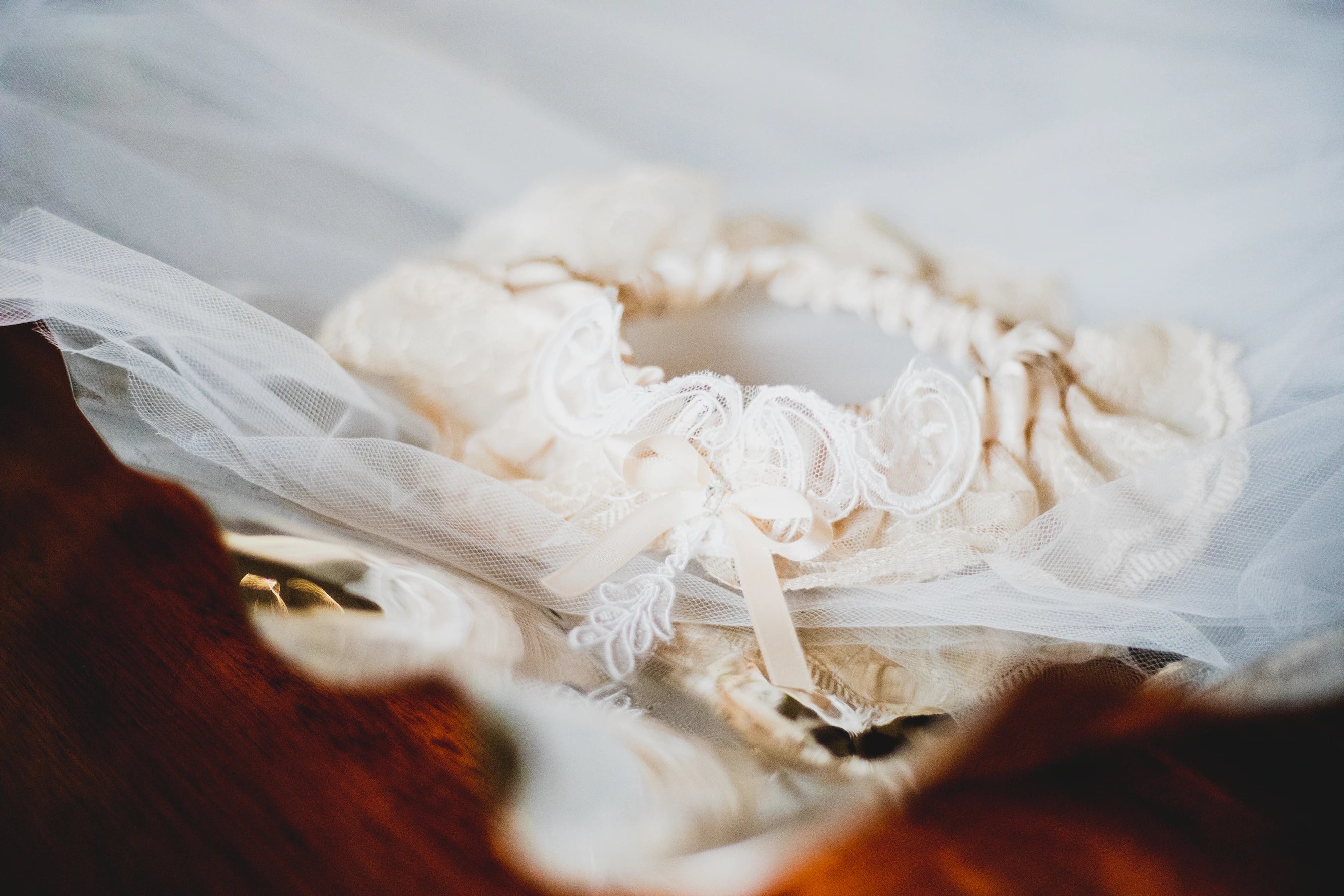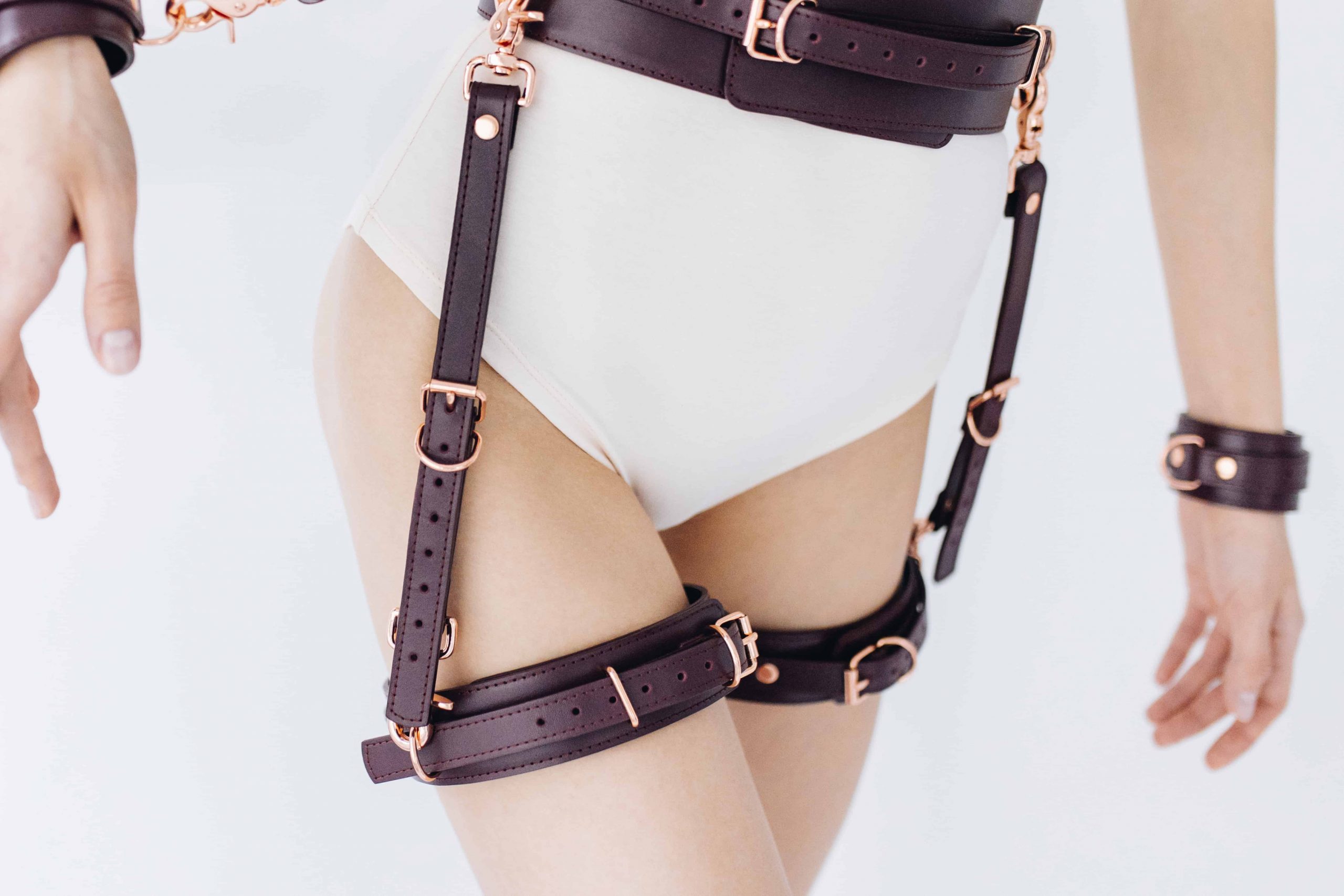Home>Latest Posts>Why Are Garters Worn
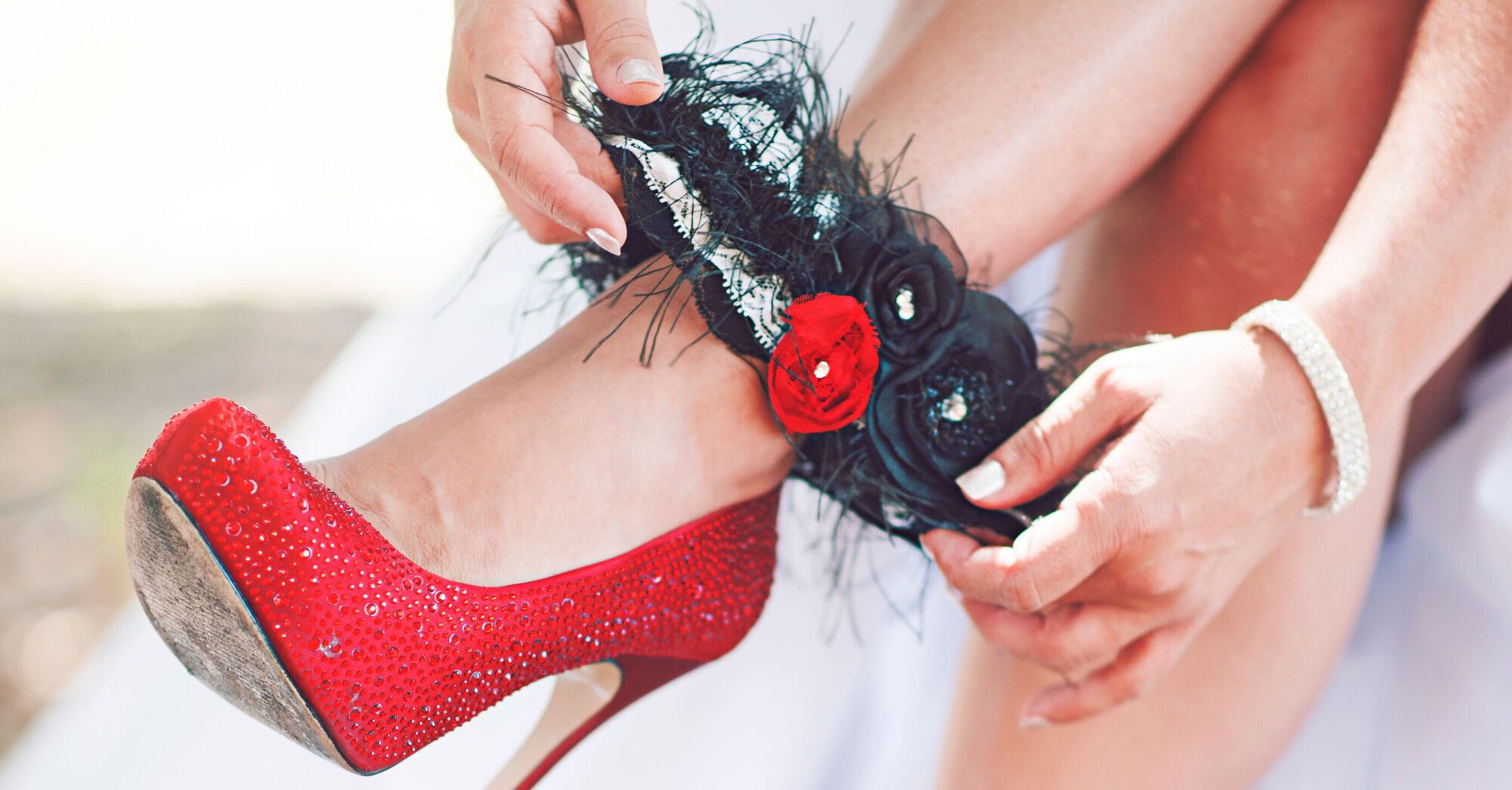

Latest Posts
Why Are Garters Worn
Modified: September 23, 2023
Find out why garters are worn by women and how they play a role in fashion, weddings, and special occasions. Explore the history and significance of this timeless accessory.
(Many of the links in this article redirect to a specific reviewed product. Your purchase of these products through affiliate links helps to generate commission for Under-tec.com, at no extra cost. Learn more)
Table of Contents
Introduction
Throughout history, women’s fashion has evolved in various ways, with each era revealing unique styles and accessories. One accessory that has stood the test of time is the garter. This small, but significant, piece of clothing has a rich history and carries symbolic meanings that have transcended generations.
Traditionally, garters were worn by women to hold up their stockings. They consisted of a band of fabric or elastic that was fastened around the thigh. Over time, the garter evolved from a functional item into a fashionable accessory, often adorned with lace, ribbons, or other decorative embellishments.
While the practical purpose of garters has diminished in modern times with the introduction of pantyhose and elasticized stockings, the garter continues to be worn, albeit for different reasons. Today, garters are primarily associated with weddings, where they play a role in both tradition and style.
This article will delve into the historical background of garters, exploring their symbolic meanings and the fashion trends associated with them. We will also explore the traditional practices surrounding garters, as well as their contemporary uses. From wedding traditions to everyday fashion statements, the garter holds a special place in the hearts of women and continues to make a statement in the world of fashion.
Historical Background
The garter has a fascinating history that dates back centuries. Its origins can be traced back to the Middle Ages, where it served a practical purpose for both men and women. During this time, stockings were held up by garters, which were usually made of leather or fabric and tied just above the knee.
In the 14th century, garters became more elaborate and decorative, especially for noblewomen. They were often made with expensive materials such as silk, adorned with intricate embroidery and jewels. Garters became a symbol of wealth and status, worn as a fashion statement rather than solely for functionality.
In addition to their fashionable appeal, garters also held significant cultural symbolism. They were associated with femininity, sensuality, and marriage. In some cultures, garters were believed to bring luck and fertility to the wearer. Young women would often receive garters as gifts during special occasions or rites of passage.
During the Renaissance period, garters became a popular accessory for both men and women. They were worn not only to hold up stockings but also as a form of self-expression. Garters were often embellished with ribbons, lace, and embroidery, showcasing the wearer’s personal style and taste.
As time passed, the garter took on new meanings and cultural significance. In the Victorian era, garters were a symbol of modesty, with women wearing multiple layers of undergarments and stockings held up by garters hidden beneath their dresses. Garters were considered intimate and were not meant to be seen.
Overall, the historical background of garters reveals a fascinating evolution from practical utility to a symbol of fashion, status, and cultural significance. The next sections will delve into the symbolic meanings and contemporary uses of garters, shedding light on why they remain a cherished accessory in the modern world.
Symbolic Meanings
Throughout history, garters have carried various symbolic meanings, representing different aspects of femininity, romance, and tradition. These meanings have evolved over time but continue to hold significance in modern times.
One of the primary symbolic meanings associated with garters is romance and sensuality. In many cultures, garters are regarded as an intimate accessory, meant to be seen only by a partner or spouse. They have been associated with the act of undressing and have a certain allure and mystery surrounding them.
In addition to romance, garters also symbolize femininity and elegance. The delicate lace, ribbons, and intricate designs often found on garters enhance their aesthetic appeal and evoke a sense of femininity and grace. Garters are often considered a symbol of beauty and sophistication.
Furthermore, garters have been linked to fertility and luck. In some cultures, garters were believed to bring good fortune and increase the chances of conceiving a child. They were worn by brides as a way to bless their marriage with fertility and ensure a prosperous future.
Garters also hold significance in terms of tradition and heritage. They have been handed down through generations, becoming family heirlooms that carry sentimental value. They symbolize the continuation of family customs and the bond between generations.
Moreover, garters symbolize celebration and joy. They are often associated with special occasions such as weddings, where they play a significant role in the ceremony. The tossing of the garter has become a popular tradition at weddings, symbolizing the transition from singlehood to married life.
Overall, garters carry a range of symbolic meanings, representing romance, femininity, tradition, luck, and celebration. These meanings have evolved over time but continue to hold relevance in modern times, making garters a cherished and meaningful accessory for many.
Fashion and Style
Garters have always been closely associated with fashion and style. Over the years, they have evolved from a functional accessory to a fashionable statement piece that adds flair to any outfit.
One of the defining elements of garters is their versatility. With a wide range of designs, materials, and embellishments, garters can be customized to match any personal style. They can be simple and understated, with a minimalist band and delicate lace, or bold and extravagant, featuring vibrant colors and intricate patterns.
Garters are often used as a fashion accessory to enhance the aesthetics of lingerie or to add a touch of elegance to formal attire. Many lingerie sets include a matching garter belt, creating a cohesive and seductive look. Garters can also be worn with dresses or skirts, especially for special occasions or formal events, adding a touch of sophistication and allure.
While traditionally associated with stockings, garters are now often worn as a fashion statement even without stockings. They can be worn directly on the skin or over tights or leggings, providing a unique and stylish touch to any ensemble. Some fashion-forward individuals even incorporate garters into their everyday streetwear, embracing the edgy and unconventional appeal.
In recent years, garters have become popular among fashion designers and influencers, appearing prominently on runways and in fashion editorials. They have become a symbol of empowerment and self-expression, challenging traditional notions of lingerie and encouraging individuals to embrace their sensuality and confidence.
The use of garters extends beyond traditional designs as well. Some brands have introduced innovative variations, such as thigh garters that can be worn higher up on the leg, adding a modern twist to the classic accessory. Others have experimented with unconventional materials and patterns, pushing the boundaries of garter design in the world of fashion.
Whether it’s a subtle lace garter peeking out from beneath a wedding gown or a bold statement piece worn with a daring evening dress, garters have become an essential part of fashion and style. Their ability to add a touch of glamour, sensuality, and uniqueness to any outfit makes them a beloved accessory among those who appreciate the artistry and creativity in fashion.
Traditional Practices
Throughout history, garters have played a significant role in various traditional practices and rituals. These practices have been passed down through generations and continue to be observed in different cultures around the world.
One of the most well-known traditional practices involving garters is the tossing of the garter at weddings. This tradition is often performed alongside the bouquet toss, where the bride throws her bouquet to a group of unmarried women. The garter toss involves the groom removing the bride’s garter and tossing it to a group of unmarried men. It is believed that the man who catches the garter is destined to be the next to marry.
In some cultures, garters are worn as a symbol of fertility and a wish for a fruitful marriage. They are often included as part of the bridal attire, hidden beneath the wedding dress. It is customary for the groom to remove the garter during the reception, either with his hands or with his teeth, symbolizing the consummation of the union and the hope for a blessed marriage.
Another traditional practice involving garters is the concept of “something old, something new, something borrowed, and something blue.” In this tradition, the garter can fulfill the “something blue” requirement by incorporating a blue ribbon, lace, or decoration. The garter is seen as a hidden token of good luck and is worn discreetly on the bride’s leg.
Furthermore, garters have been used in the past to carry small items such as a handkerchief or a special charm. The garter served as a practical and convenient accessory, keeping these items close to the wearer and adding a touch of personal sentiment.
In some religious and cultural ceremonies, garters are also worn by performers as a part of traditional dress. For example, in Scottish Highland dancing, female dancers wear garters as a part of their costume. The garters are often brightly colored and serve as a symbolic representation of heritage and tradition.
These traditional practices and rituals involving garters add an element of symbolism, excitement, and cultural significance to special occasions, particularly weddings. They honor the history and customs associated with garters, ensuring that these traditions continue to be passed down and celebrated.
Contemporary Uses
While the practical use of garters may have diminished in modern times, they continue to hold a special place in contemporary fashion and culture. Garters are now primarily worn for aesthetic purposes and as an expression of personal style.
In the realm of lingerie, garters are a popular choice for those who want to add allure and sophistication to their intimate attire. Many lingerie sets include garter belts and stockings, creating a seductive and elegant look. The garters not only serve to hold up the stockings but also enhance the visual appeal and create a sense of sensuality.
Beyond the realm of lingerie, garters have become iconic accessories in the world of burlesque and cabaret. Performers often incorporate garters into their costumes, adding a touch of vintage glamour and evoking nostalgia for a bygone era of entertainment. Garters have become an essential part of the stage attire, symbolizing confidence and showmanship.
Furthermore, garters have found their way into alternative and subculture fashion. They have become a staple accessory in gothic and punk fashion, adding a rebellious and edgy element to the overall look. Garters can be seen worn over fishnet stockings, leggings, or even jeans, creating a striking visual contrast and a distinctive style statement.
Additionally, garters have made their mark in the world of bridal fashion. Although the practical need for garters to hold up stockings has diminished, many brides still choose to wear garters as a traditional and sentimental accessory. Garters are often adorned with delicate lace and embellishments that coordinate with the bride’s wedding gown, serving as a hidden treasure beneath the layers of fabric.
In recent years, garters have also seen a resurgence as a statement piece in mainstream fashion. Designers and fashion enthusiasts have incorporated garters into streetwear, pushing the boundaries of fashion conventions. Garters worn on the outside of clothing, either strapped around the leg or draped on the hips, add an unexpected and daring element to outfits, challenging traditional norms and embracing individuality.
From intimate lingerie to stage performances and alternative fashion, garters continue to be a versatile and influential accessory in contemporary uses. Whether as a subtle touch of elegance or as a bold fashion statement, garters allow individuals to express their personal style, embrace their sensuality, and add a touch of intrigue to their overall look.
Wedding Traditions
When it comes to weddings, garters hold a special significance, representing tradition, luck, and romance. Various customs and rituals involving garters have been observed for generations, adding a touch of charm and symbolism to the celebration of love.
One of the most well-known wedding traditions involving garters is the tossing of the garter. Similar to the bouquet toss, the groom removes the bride’s garter and tosses it to a group of unmarried men. Just like with the bouquet toss, it is believed that the man who catches the garter will be the next to marry. This tradition adds a playful and lighthearted element to the wedding reception.
Another popular wedding tradition involving garters is the removal of the garter by the groom. Towards the end of the reception, the groom discreetly removes the garter from the bride’s leg, often with his teeth. This act symbolizes the consummation of the marriage and the transition from singlehood to married life.
Historically, garters were also considered to be tokens of good luck. It was customary for wedding guests to try and snatch a piece of the bride’s garter as a means to share in the couple’s luck. To prevent the bride’s garter from being torn or damaged, it became customary for the bride to throw the garter as a gift to the guests, similar to the throwing of the bouquet.
In some cultures, the garter holds further significance in wedding traditions. In Greek weddings, for example, the bride may wear a blue garter as a cultural symbol of fertility and protection against the Evil Eye. In Hispanic cultures, the groom may remove the bride’s garter and then give it to the woman who caught the bouquet.
In modern weddings, garters have also become a popular accessory for brides to wear as a symbol of tradition and femininity. Often made with delicate lace and adorned with intricate embellishments, garters add a touch of romance and elegance beneath the wedding gown. Some brides incorporate the “something blue” tradition by selecting a garter with a blue ribbon or detailing.
Beyond the symbolic and traditional aspects, garters also provide beautiful photo opportunities. Photographers often capture the moment of the groom’s garter removal or the bride’s garter toss, adding to the narrative of the wedding day and capturing the joy and excitement of these cherished traditions.
Wedding traditions involving garters have evolved over time, but they continue to be cherished and celebrated as an integral part of the wedding day. Whether it’s the tossing of the garter, the removal ceremony, or the wearing of a sentimental accessory, garters hold a special place in the hearts of couples as they embark on their journey of marriage.
Conclusion
The garter, with its rich history and symbolic meanings, continues to captivate and inspire. From its origins as a functional item to its transformation into a fashionable accessory, the garter has stood the test of time, evolving alongside changing fashion trends and cultural practices.
Throughout history, garters have symbolized romance, beauty, and femininity. They have been associated with tradition, luck, and celebration, playing a significant role in weddings and other special occasions. Whether hidden beneath a wedding gown, a part of intimate lingerie, or worn as a bold fashion statement, garters add an element of allure and elegance to any ensemble.
In modern times, garters have evolved to embrace individuality and self-expression. They have found their place in mainstream fashion and alternative subcultures, defying conventions and pushing boundaries. From burlesque performances to gothic aesthetics, garters showcase personal style and creativity.
While the practical need for garters may have decreased, their emotional and cultural significance remains strong. They carry sentiments of tradition, family heritage, and the celebration of love. Garters continue to be cherished as heirlooms and as accessories that symbolize important milestones in life.
Whether worn by brides, performers, or fashion enthusiasts, garters continue to inspire and empower. They embody the essence of femininity, sensuality, and confidence. From the Middle Ages to the present day, the garter has left an indelible mark on the world of fashion and symbolizes the timeless elegance of For Women.
